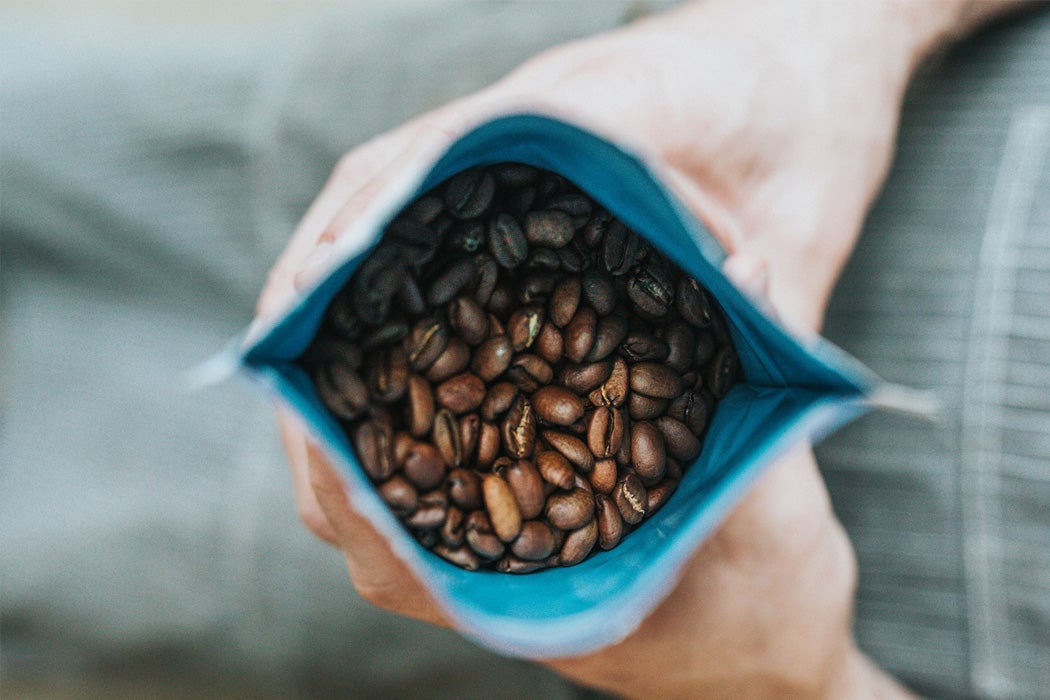In recent years, coffee growers around the world have battled with disease, pests, droughts, and a lack of pollinators. Despite the fact that coffee is grown nearly everywhere, from South America to Africa to Asia, scientists worry that nearly half of this land won’t be able to generate harvests by 2050.
Coffee growers and coffee lovers have reasons to worry about the world’s caffeine supply. Coffee is susceptible to fungi, like Hemileia vastatrix (“coffee rust”), which damages the leaves, and to Colletotrichum kahawae, which destroys the fruit. It also succumbs to the coffee cherry borer, a small beetle that lays eggs within the coffee berries’ seeds, which we call coffee beans. And it doesn’t do well with weather flukes, like heat waves, droughts, and unusually heavy rains—all of which not only stress the plants, but can help pathogens take hold.
But the issues aren’t limited to extreme weather events or pest attacks. The perils also lie within the coffee plant itself. Even though an average coffee shop may boast more than a dozen varieties, with diverse origins and tastes, most of our beans are produced by the same plant species, called Coffea arabica. First found in Ethiopia, C. arabica became the most cultivated variety (it still is today). As legend has it, the plant was first discovered by a herd of curious goats that liked to eat the berries off the plant. The goats, people noticed, became incredibly energetic afterwards. Following the goats’ clues, humans began to brew the berries into an energizing drink. And in the early days, coffee was used as a mystical sacrament, playing an important role in religious ceremonies as men and women sipped it from a shared bowl they passed around.
Early on, C. arabica wasn’t a cultivated crop, more of a nature’s bounty that people and animals foraged for. It was likely first domesticated in Yemen, which managed to hold a monopoly on its production for over two centuries. Eventually, the coffee beans made their way out into the world—and spread quickly. Around 1690s, the Dutch East India Company brought some beans to Europe. Planted in the Amsterdam Botanical Garden, the beans grew and produced fruit. From there, the plants were sent to Suriname, in South America. A few years later, the English brought them to Jamaica, and the French to Martinique. In about the same timeframe, C. arabica arrived in Sumatra, Ceylon, and the Philippines. In Brazil, coffee cultivation commenced around 1774.
Weekly Newsletter
But, despite being a uniformly beloved drink, coffee is a so-called orphan crop—there hasn’t been much research into its genetic variety or adaptability. No big company or country has a monopoly on coffee beans, which is why farmers can grow coffee from whatever seeds they like. But most of those seeds, no matter the geographical locale, belong to the C. arabica species—and that’s a problem. Just like any other crop cultivated by humans for specific traits they liked, C. arabica may have lost some disease-resistant traits or other resilience characteristics. That’s why scientists today are looking for wild coffee species and sequencing the DNA of coffee beans from gene banks around the world.
Can our caffeinated future be ensured? Scientists hope so. There are about 125 other, non-domesticated species of coffee growing in different parts of the planet and possibly even more still waiting to be discovered. But even with wild varieties, nearly 70 percent of them may become extinct, with 10 percent disappearing within a decade—due to climate change, deforestation, and other adverse events. Scientists have to find and cultivate these plants fast, so that we can all can keep enjoying our morning cup of joe.







